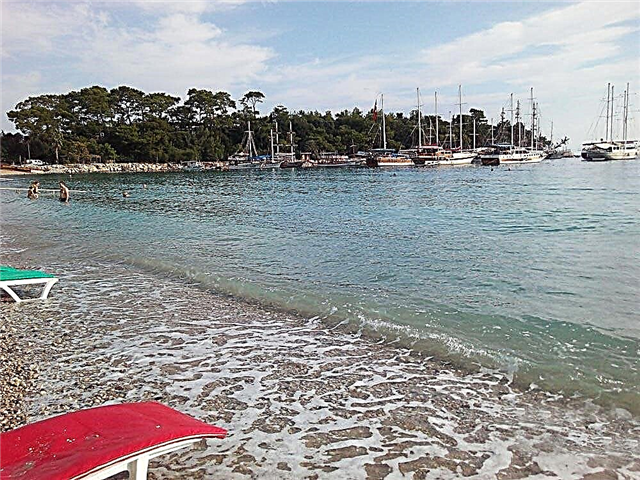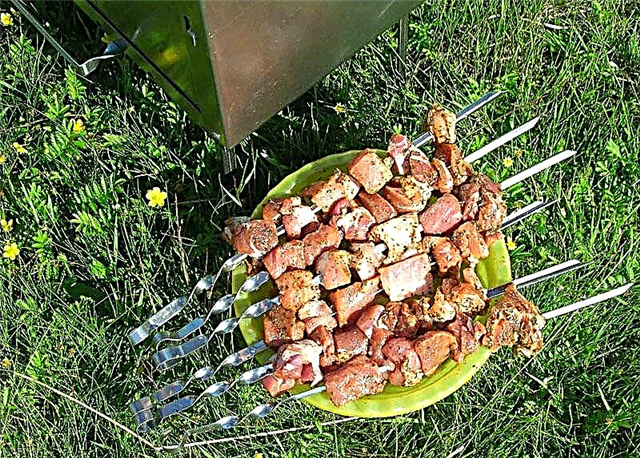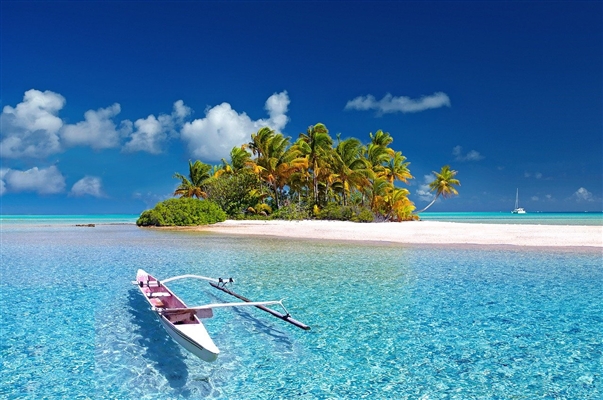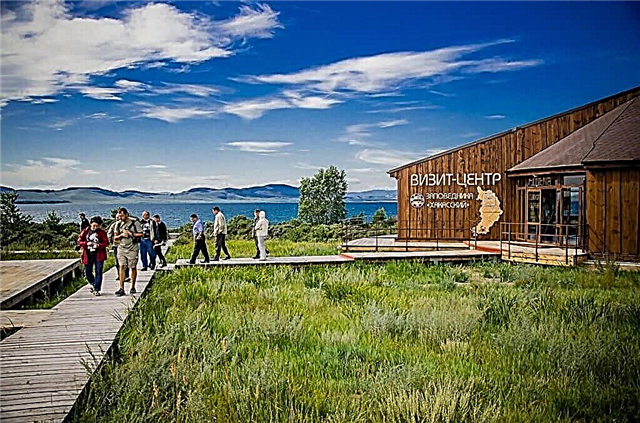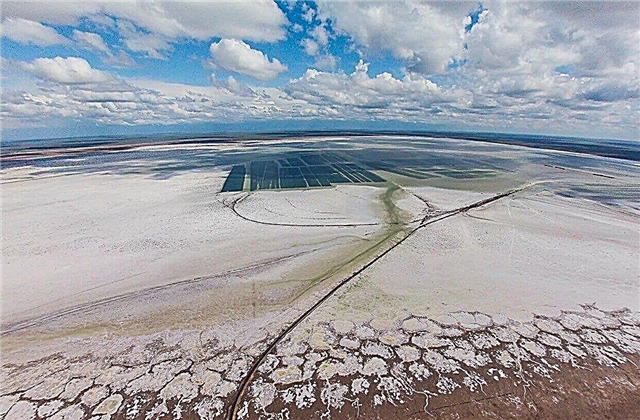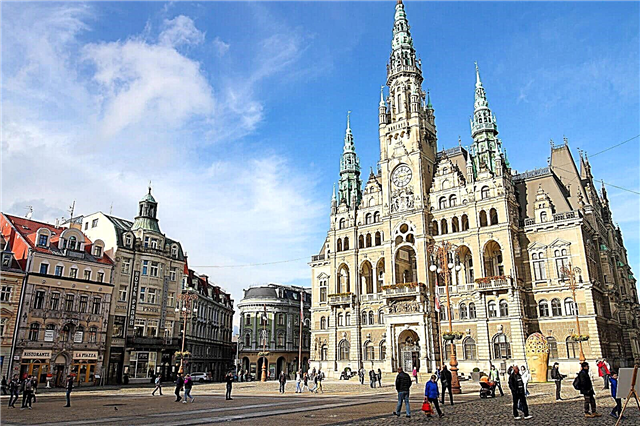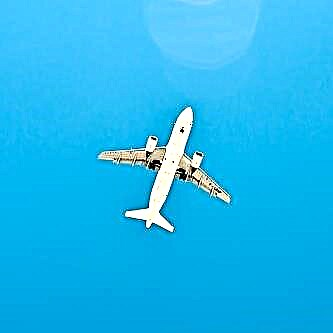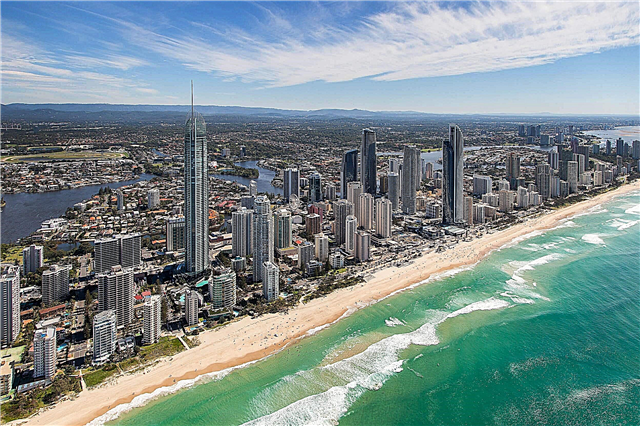Australia is a country that covers an entire continent. At the same time, reservoirs with fresh water are unevenly distributed across the mainland, so that in some states there are occasional short-term difficulties due to the lack of this resource.
All cities in Australia, one way or another, are tailored for tourism. This industry makes up a significant part of their economic potential. Sydney and Melbourne are the most popular destination for travelers. They are full of architectural objects, entertainment, beaches and natural beauty. The cities of the state of Tasmania, located on a separate island, also stand out. And also lucky Bundaberg and other settlements, from where it is a stone's throw to the Great Barrier Reef - a magnet for tourists.
The largest cities in Australia
List of the largest cities in terms of population in the country.
Sydney
The oldest city on the continent is located on the southeast coast. The architecture is mixed: high-rise buildings in the center and the private sector on the outskirts. The view of the opera house is the most recognizable image of Sydney. It is listed as a UNESCO World Heritage Site. Other major attractions include the Harbor Bridge, Australian Museum, Taronga Zoo, Woolloomooloo Bay Marina, Cathedral of the Virgin Mary.
Population - 5 131 326 people (2017)
Hotels on Booking.com: Sydney

Melbourne
Covers vast areas of Port Phillip Bay. The southernmost city in the world among the "millionaires". The tourism industry is well developed and offers various types of leisure activities: from luxury travel to backpacking - travel with low costs and the minimum necessary. Melbourne has Victorian architecture buildings including the Royal Exhibition Center. The Crown Casino, Aquarium and Eureka Tower are also worth a visit.
Population - 4 196 201 people (2016)

Brisbane
Based on the river of the same name, and also has access to the Pacific Ocean. Fastest growing city in Australia. Floods occur due to excessive rainfall. Popular tourist attractions include scuba diving and reef viewing. Brisbane has many parks and green spaces, including a large botanical garden divided into themed sections.
Population - 2,360,241 people (2016)
Hotels on Booking.com: Brisbane

Perth
Capital of the state of Western Australia. Perth became known as the City of Lights after 1962. Then all the inhabitants turned on the lights while the spacecraft flew over them. The Swan River frames the central region to the south and east. In the Kounu Koala Park nature reserve, it is allowed to take animals in your arms. There are numerous museums including Western Australian and fire history.
Population - 2,059,484 people (2018)
Hotels on Booking.com: Perth

Adelaide
Occupies coastal areas of Saint Vincent Bay in the south of the mainland. Important state and financial institutions of the country are based in the city. The development plan is a grid, which is convenient for orientation and traffic. Botanical sodas, parks and surrounding valleys make the area picturesque. Adelaide is home to the National Wine Center of Australia.
Population - 1 333 927 people (2017)

Gold Coast
Water tourism center of the country. It stretches along the east coast for 60 km. Swampy areas of the Nerang River have undergone partial drainage. Artificial reservoirs appeared in their place. The resort infrastructure began to appear in the 80s of the last century. Surfer competitions are held on local beaches.
Population - 638,090 people (2016)

Newcastle
It is located at the mouth of the Hunter River and on the shores of the Tasman Sea. The port of Newcastle, Australia, has the most coal in the world. The city hosts annual cultural events, such as a festival called “This is not art”. More than 10 theaters and studios have been opened with regular performances. Popular sports include rugby, horse racing and cricket.
Population - 481 183 people (2017)
Hotels on Booking.com: Newcastle

Canberra
The capital of Australia, and the largest non-coastal city. The area was chosen for the capital at the beginning of the last century to put an end to the rivalry between Sydney and Melbourne. Although the landmarks of the area were created mostly recently, they are already recognizable. The most popular of them: the Australian War Memorial, the building of the Academy of Sciences, the National Museum.
Population - 410 199 people (2019)

Wollongong
Location - the coast of the Tasman Sea. The city is musical and theatrical: small stages for amateur creativity have been created, professional troupes have also been gathered, festivals, both genre and thematic, are held. There are more than 20 beaches in and around Wollongong. Sightseeing: Rainforest Center, Botanical Garden, Illawarra Lake, Nan Tian Buddhist Temple.
Population - 261 897 people (2016)

Sunshine Coast
Coastal area in Queensland. The influx of tourists and temporary workers increases the number of residents in the season by 50 thousand. The beach infrastructure is developed, hotels are being built right next to the water. Typical leisure activities in the resort: surfing, skydiving, yachting. There is a zoo, an aquarium, golf clubs, amusement parks, 5 national parks.
Population - 243 377 people (2016)

Hobart
The capital of the state of Tasmania, the second oldest city on the mainland. Antarctic expeditions start from Hobart. The architecture is mixed: there are different styles and directions, although they combine well. Preserved buildings of the colonial era, show high-rise buildings. The city's main museum is called Old and New Art. Mount Wellington stands out among the natural beauty.
Population - 240 342 people (2019)
Hotels on Booking.com: Hobart

Geelong
Built around the bay of Corio. The translation of the name from the Aboriginal language is "valley" or "slopes". The city hosts traditional events, including the Gala Day parade, which will soon turn 100 years old. Pubs, nightclubs and live music venues can be found on almost every street. Geelong is connected to other settlements by a network of roads, but its airport is also in demand.
Population - 191 440 people (2016)
Hotels on Booking.com: Geelong

Townsville
Located in Queensland near the Great Barrier Reef. The city has an aquarium with samples of its flora and fauna. Nearby is the Magnetic Island. Its national park is a popular tourist destination. People also come here to wander through the surrounding jungle. The economy relies on the shipment of minerals through the port of Townsville.
Population - 178 649 people (2016)

Cairns
Occupies the east coast of Cape York Peninsula in Queensland. In addition to hotels, holiday homes have been built. The sandy beaches are wide and long. Themed excursions have been developed. Tourists need to be careful when walking outside the city. Poisonous species of snakes and spiders are found in the vicinity of Cairns, and shark or crocodile can be found in coastal waters.
Population - 144 733 people (2016)
Hotels on Booking.com: Cairns

Darwin
The capital of the subject of the federation of Australia, which is called the Northern Territories. Throughout its history, the city was completely rebuilt twice: after the Japanese air raids during World War II and after the cyclone of 1974. This made Darwin, from an architectural point of view, the most modern and thoughtful city on the mainland. Kakadu National Park is the most popular part of the area.
Population - 136 828 people (2016)
Hotels on Booking.com: Darwin

Toowoomba
The second most populous non-coastal city after the capital. Occupies land in the southeast of Queensland. There is a problem with fresh drinking water as there are no sources nearby.The airport is operating, although it is small and not fully loaded. A flower festival is held in September. The main sport of the city is rugby. A full stadium is going to league games.
Population - 135 631 people (2017)
Hotels on Booking.com: Toowoomba

Bendigo
Victoria landlocked city. The development of Bendigo coincided with the period of the "gold rush". Sightseeing: Museum of the Golden Dragon, Velikaya Stupa, pottery workshop, old tram tracks. Abandoned objects associated with gold mining are also actively used. Among them is the central mine, equipped for visiting tourist groups.
Population - 95 587 people (2016)
Hotels on Booking.com: Bendigo

Ballarat
It is located in the foothills of the Great Dividing Range. There are no national parks in the vicinity of Ballarat, which raises environmental concerns. The history of the city is closely connected with gold mining, and pollution of the environment is always accompanied by such a field. The most visited place in the city is Souvenir Hill - an open-air museum.
Population - 93 761 people (2016)

Albury-Wadonga
The region belongs to the state of New South Wales. The area is rich in natural beauty, including Lake Hume and the Great Dividing Range. Tourists go fishing, boating and canoeing. A large art museum was opened, as well as a museum-library. Locals prefer football and cricket as a spectacle.
Population - 83 102 people (2016)

McKie
Occupies the coastal area of the Coral Sea. The Great Barrier Reef is 50 km away. During the construction of the Eungella dam, a deep lake was formed, which has now become a popular place among amateur fishermen. The coast is split into 30 small sandy beaches. There is a national park nearby, most of which is covered with tropical forests.
Population - 75 704 people (2016)
Hotels on Booking.com: Mackay

Launceston
It stands at the confluence of the North and South Esk rivers in Tasmania. The resulting Teimar River is very wide. This unusual location is reflected on the flag of the city. Launceston is called the "Garden City of the North" for its abundance of parks. The center is built up with Victorian buildings. In the surrounding area, there is the Cataract Gorge leading to a waterfall and lake.
Population - 75 328 people (2016)

Banbury
Located on the southwest coast. Main attractions: Rose Hotel, Old Pier, St. Mark's Church, King's Cottage Museum. The Art Gallery has been operating since 1987. It occupies a building built in 1897. Tourists traditionally do not bypass the dolphinarium, Fitzgerald's Irish bar, wildlife park and local beaches.
Population - 71 094 (2016)
Hotels on Booking.com: Banbury

Rockhampton
This area of Queensland is called the Coast of Capricorn. As in some other cities in the state, there are short-term interruptions in fresh water. The tourist season is long and lasts more than 300 days a year. In the center of Rockhampton, buildings from the 19th and early 20th centuries have been preserved. Clean beaches stretch along the Coral Sea. Tourists should visit the Heritage Village Museum, Capricorn Caves and Mount Archer.
Population - 61,213 people (2016)

Wagga-Wagga
Based on the banks of the Marrumbidgee River in New South Wales. The population is over 54 thousand people. More than 2 thousand consider themselves to be aborigines. And the average age of residents is only 33 years old. The Wagg Wagg has increased traffic due to its good location - just halfway between Melbourne and Sydney. Being non-coastal, the city lives off agriculture and transportation.
Population - 54 411 people (2016)

Harvey Bay
A city in the state of Queensland with a population of over 52 thousand people. Harvey Bay separates mainland Australia from an island called Fraser. Tourism is the backbone of the local economy. People come here to watch whales during their migration and arrange a photo hunt. The beaches are sandy, clean and wide. The coastal zone is practically not built up, which attracts lovers of outdoor recreation.
Population - 52,075 people (2016)

Bundaberg
Location - East coast of Queensland. The city developed due to the processing of sugar cane and sugar trade. The economy is still largely focused on this area. Here, since 1888, a special sort of rum has been produced, named after the city - the visiting card of the country. Bundaberg is the gateway to the Great Barrier Reef: from here it is most convenient to recover to the wonder of nature.
Population - 50 150 (2016)

Coffs harbor
Belongs to the territory of the state of New South Wales. Bananas and blueberries are grown in the vicinity of the town. Another economically important industry is fishing. Thanks to the airport, tourism is booming. The most popular attraction, the Big Banana, has been operating since 1965. Travelers choose Coffs Harbor also because of the national parks, of which there are more than 10 in the district.
Population - 48 221 people (2016)

Gladstone
Stands on the shores of the Coral Sea. Thanks to the nearby Curtis and Faising Islands, Gladstone Harbor is sheltered from the winds. The third largest port in the country was built here. There are no reservoirs nearby, so there are rare interruptions in drinking water. The main attraction of the area is the Great Barrier Reef, which is about 50 km away.
Population - 33 417 people (2016)

Mildura
Located in northwest Victoria. The population together with Wentworth and other suburbs is more than 50 thousand people. A third of tourism is accounted for by Australians spending weekends in Mildura or visiting relatives. Rowing competitions are held on the river, and travel on small cruise ships is popular. A popular tourist service has been put on stream - a hot air balloon flight.
Population - 32 738 people (2016)

Shepparton
The population of the agglomeration is 49.5 thousand people. 10% of them are natives. The city promotes dairy products in an interesting way. For several years now, artists have been working on the "Moooving Art" project: they create "portraits" of cows and organize exhibitions. The local SAM museum has the world's largest collection of Australian ceramics. The predominant denomination is Catholicism, and the main religious site is the Church of St. Benedict.
Population - 31 197 people (2016)




